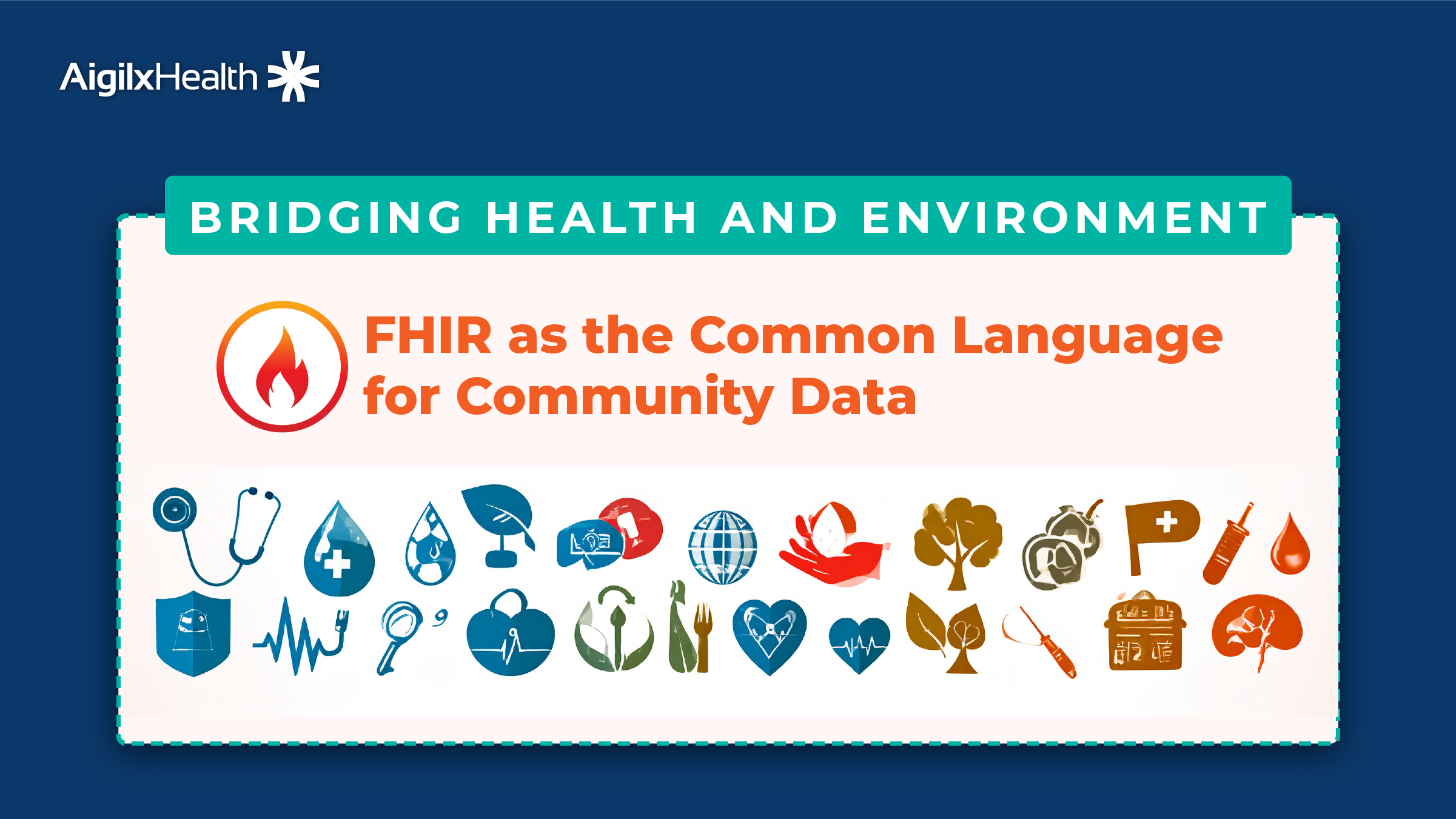Bridging Health and Environment: FHIR as the Common Language for Community Data
14 Aug

Community groups, clinics, and public agencies already track what people need and what they receive. The CDC’s Environmental Public Health Tracking Program shows how powerful it is to connect those records with local environmental signals so we can act faster and measure what works. Its mission is clear: provide information from a nationwide network of integrated health and environmental data to drive action.
What is FHIR
FHIR is a widely used standard that lets software systems exchange health information using familiar web APIs. It’s the “common language” that helps social care, healthcare, and public health systems talk to each other. For population-level work, the SMART/HL7 Bulk Data API lets authorized teams securely export cohort data for analysis.
Why this matters to social care
- One view of need and risk. You can link service records and assessments with local environment data (for example, air quality or heat) to spot who may need help first. The CDC Tracking Network was built to bring health and environmental data together in one place and make it easy to use.
- Less re-typing. FHIR supports standard fields for screenings, referrals, services, and outcomes, so information can move between systems with less manual work.
- Better reporting. Bulk Data exports make it simpler to build dashboards for grants and boards without bespoke data pulls each time.
Add a Semantics Layer: EHLC + FHIR
FHIR moves data. The Environmental Health Language Collaborative (EHLC) focuses on using common terms and metadata so environmental-health datasets are easier to find, join, and reuse. Its “Use Case Working Groups” target data findability, reuse, and interoperability—a helpful layer for community projects that plan to pool results across counties.
What Recent Research Demonstrates
A 2025 peer-reviewed study introduced FHIR PIT, an open-source pipeline that takes EHR data in FHIR and links it to environmental exposures at the individual level (e.g., particulate matter, ozone). In two real-world cohorts (asthma; primary ciliary dyskinesia), higher exposure levels were associated with more respiratory hospitalizations. This is a practical template for community projects that want to join services, health outcomes, and local environment—using FHIR end-to-end.
A Simple Build Pattern for Coalitions
- Bring in environment data. Use trusted sources (the CDC Tracking Network’s data explorer and APIs) and store readings with time and location as FHIR “Observations.”
- Model social-care work. Capture screenings, referrals, services provided, and results using FHIR so your CBO platform, health-system EHRs, and public health can share a common format.
- Connect to care data. Use FHIR APIs for encounters, problems, and meds; enable Bulk Data when you need cohort exports for monitoring and evaluation.
Governance and trust
You’ll need clear data-sharing rules and consent language. The national TEFCA roadmap is adding FHIR-based exchange between health-information networks, with QHIN-to-QHIN FHIR pilots. Aligning to these expectations now will make partnerships with health systems and HIEs smoother.
Quick wins for a social-care coalition
- Asthma + bad air days. When PM2.5 or ozone cross a local threshold, trigger medication checks, masks, or air purifiers for high-risk households; track outcomes monthly with a simple Bulk Data export. (Pattern supported by CDC Tracking’s purpose and the FHIR PIT study.)
- Extreme heat outreach. Flag households at risk during heat alerts and log services (cooling support, transportation) using the same FHIR fields used by health partners.
- Post-smoke or flood well-checks
After an event, join exposure windows to client lists and recent encounters. Prioritize home visits and housing supports for those with respiratory or cardiac risks. Export cohorts for 30–60-day follow-up.
How this aligns with public-health modernization
CDC’s Strategic Plan 2022–2026 for Environmental Public Health Tracking emphasizes interoperable infrastructure, shareable tools, open data, and partnerships to put better information in people’s hands. That is exactly what a FHIR-based community data layer provides
How Aigilx Health makes this easy
- FHIR, ready on day one. We deploy an analytics-ready FHIR layer and wire in your sources so social care, health, and environment data land in one place.
- No rip-and-replace. We connect to existing systems and convert legacy formats into FHIR so frontline teams don’t change their workflow.
- Built for action. We enable Bulk Data exports and simple dashboards so you can report impact and improve services—fast.
With these building blocks, coalitions can join up social-care actions, health outcomes, and local environment in one trusted layer—without asking frontline staff to change their workflow.
Talk to us to know more about how we can bring it all together using FHIR!
Follow us for ongoing insights on AI, FHIR, and data-driven transformation
Categories
- 1115 Waiver (8)
- ACO (7)
- AI (2)
- Aigilx Health (2)
- CCBHC (8)
- Control Center (10)
- FHIR Facade (7)
- FHIR Server (14)
- HIE (5)
- Payers (8)
- Providers (11)
- Rapid Fire (9)

Aigilx health specializes in developing Interoperability solutions to create a healthcare ecosystem and aids in the delivery of efficient, patient-centric and population-focused healthcare.
